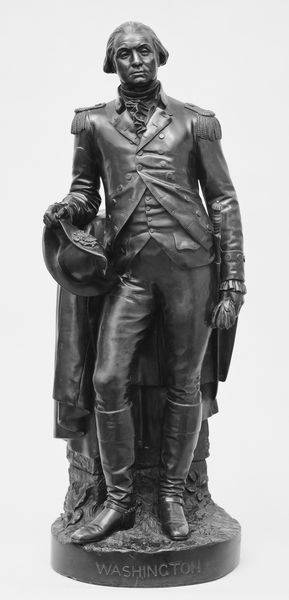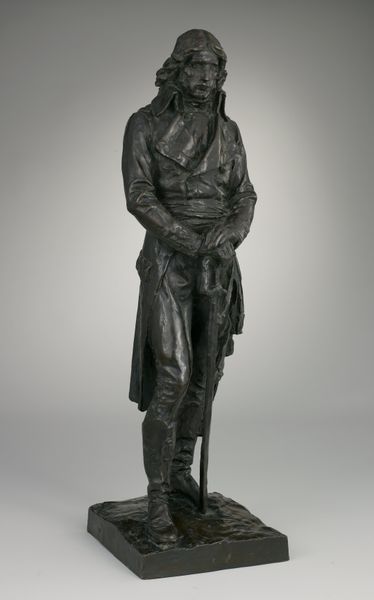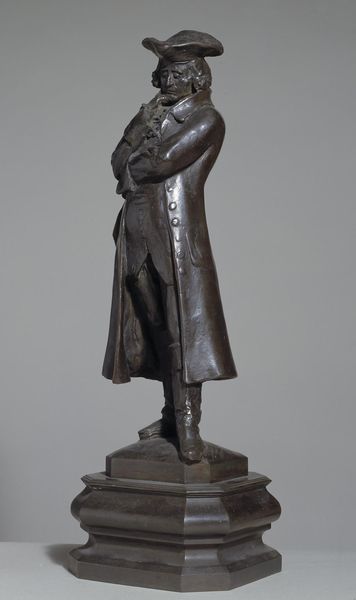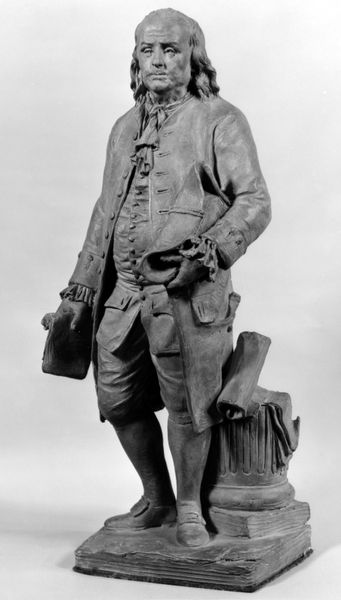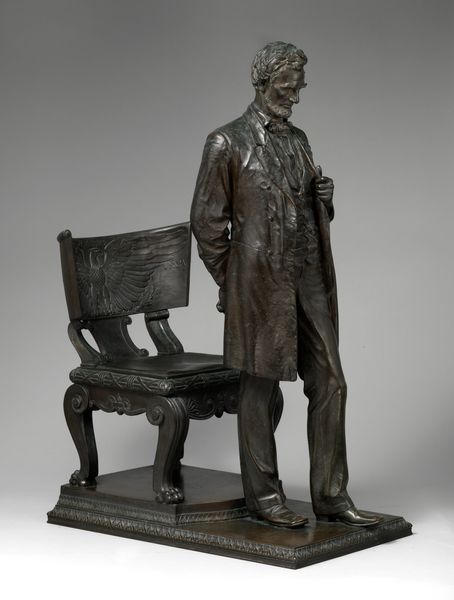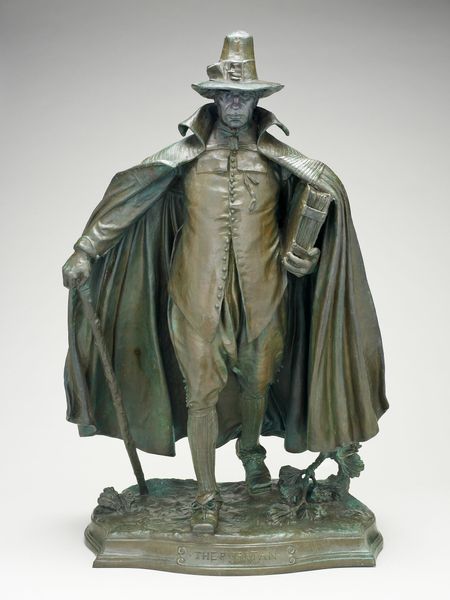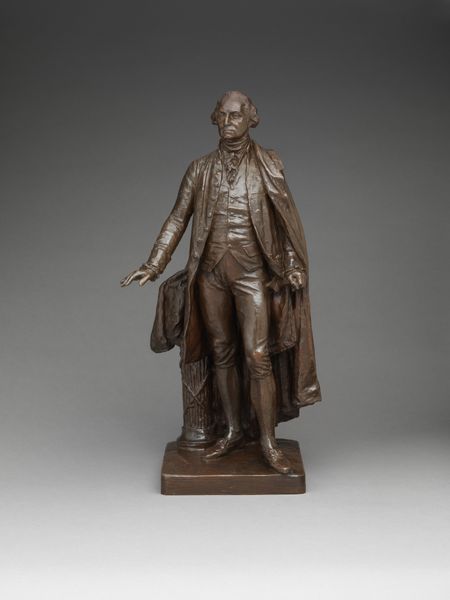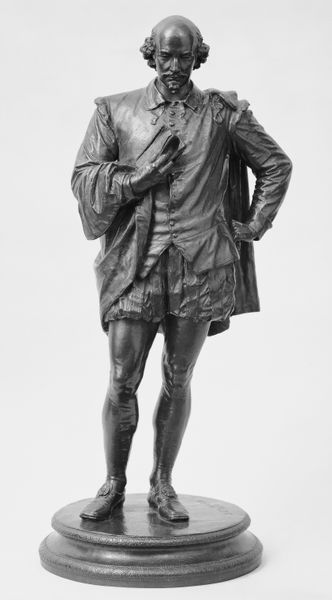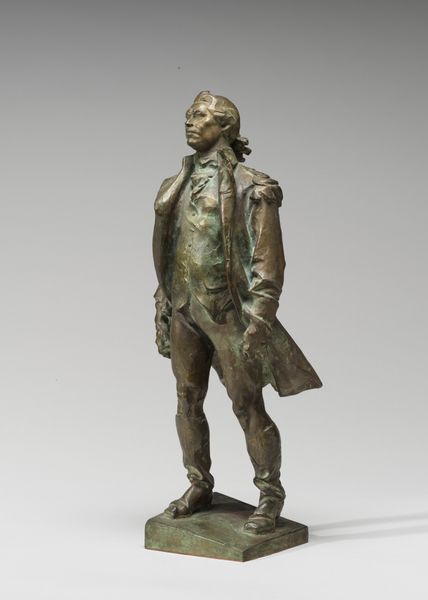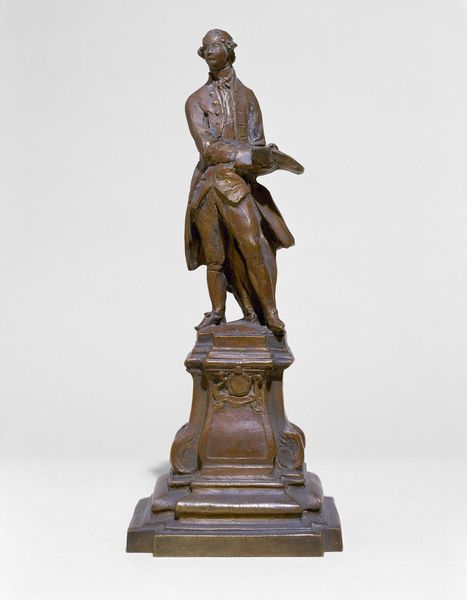
metal, bronze, sculpture
#
portrait
#
16_19th-century
#
metal
#
sculpture
#
bronze
#
sculpture
#
men
#
united-states
#
history-painting
#
realism
Dimensions: 30 1/2 x 12 3/4 x 10 3/4 in. (77.5 x 32.4 x 27.3 cm)
Copyright: Public Domain
This bronze statue of Henry Clay was crafted by Thomas Ball and now resides in the Metropolitan Museum of Art. Clay stands next to a column, clutching a scroll in his left hand. The column, an architectural element dating back to antiquity, has long symbolized strength, stability, and virtue. In ancient Greece and Rome, columns supported temples and public buildings, embodying the enduring power of civilization. Over time, the column has resurfaced in various contexts, often symbolizing not just physical support but also moral and intellectual fortitude. Here, Clay leans against it in contrapposto, a relaxed pose borrowed from classical sculpture, connoting statesmanship and composure. This posture engages viewers on a deep, subconscious level, evoking a sense of trust and admiration. Thus, the symbolic language of form and symbol invites us to consider how the cultural memory of classical ideals continues to shape our understanding of leadership and civic virtue.
Comments
No comments
Be the first to comment and join the conversation on the ultimate creative platform.

